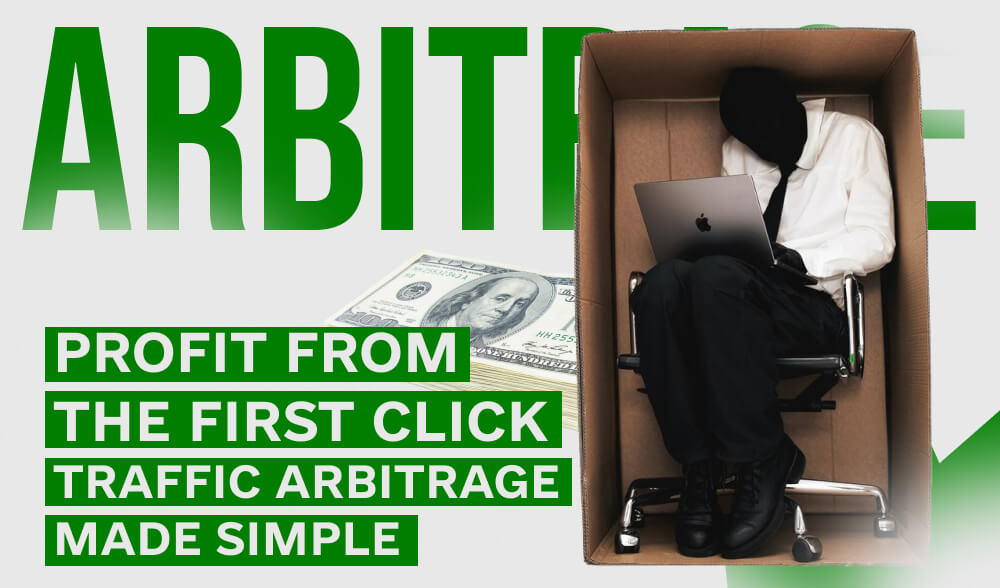Traffic arbitrage is one of the most popular ways to monetize online advertising. Its essence lies in buying traffic at a lower price, directing it to commercial offers, and making money on the difference between costs and income. This is a direction that combines analytics, marketing, creative, and flexible budget management.

What is traffic arbitrage
This is a model where a specialist (arbitrager) launches ads to attract users to a particular product or service. For each targeted action: purchase, registration, or app installation, he receives a reward that is often higher than the cost of the traffic attracted. The task is to build a successful relationship that brings profit.
For example, an affiliate program may have an offer with a $5 fee for registration. The arbitrageur launches ads on social networks or through search traffic. If they manage to keep the cost of user acquisition at $3 and below, the bundle becomes profitable. With proper optimization, this model can scale and bring a stable income.
How the process works
- Choosing an offer in the affiliate program;
- Creation of creatives and landing page (if necessary);
- Launching an advertising campaign;
- Getting traffic and tracking conversions;
- Campaign optimization based on analytics;
- Scaling profitable relationships.
Everything is based on the correct analysis of indicators: CTR, CR, CPA, ROI, LTV, EPC, bounce rate, AOV, retention rate. Without data, it is a risky game of chance. It is also important to research the target audience, adapt creatives for different platforms and offers.
Step-by-step scheme: where to start
In order not to act at random, you should have a clear strategy. Here is a basic action plan for a beginner:
- Choose a niche or a type of offer – it can be either “white” areas (fitness apps, e-commerce, mental health services) or detachment, financial products, or sweepstakes. The main thing is to choose a niche in which it will be clear for you to work and test connections.
- Analyze competitors: what creatives they use, what countries they work from, what formats they choose.
- Launch a simple bundle: one traffic source, several creatives, an affiliate and a tracker.
- Collect data from the first days and do not expect to be in the black immediately, you will gain experience first.
Traffic types: not everything is about Facebook Ads
Most newbies start with Facebook or TikTok, but there are other channels as well:
Push traffic: notifications in browsers, available, but not always of high quality;
Native: advertising that looks like a part of the content, effective in countries with high solvency;
Pop: grabs attention but requires strong branding;
Search arbitrage: traffic from search engines at low rates that is redirected to monetized pages.
It’s important to choose a channel that you are ready to work in deeply and long-term, but it’s also cool to test different channels.

How to avoid common mistakes
Don’t copy creatives without adapting them;
Follow the rules of advertising platforms;
Study analytics – there is no growth without numbers;
Avoid offers with ultra-high bids without confirmed conversion.
Analytics: what numbers are really important
ROI is the profitability of the entire campaign;
EPC – average earnings per click;
CPA – cost per conversion;
LTV – long-term user value (relevant for subscriptions);
CTR – click-through rate;
CR – click-through rate.
Actions that help to stay afloat
- Start with “white” offers – simple and clear products or applications;
- Create a pre-lander, it helps to warm up interest before conversion;
- Optimize in stages: creatives first, then audiences and budgets;
- Implement rule-based automation in the ad account, for example, turn off creative with a CTR of 0.5%.
How to evaluate the result
- ROI > 0 is the main indicator that the campaign is in the black. But in some cases, ROI may fluctuate during the testing phase, and this is normal.
- CTR over 1% is a signal that the creative is of interest. However, depending on the platform, this figure can vary greatly (for example, TikTok often has a higher CTR, while Google Ads has a lower one).
- CR over 5% is a good result for simple targeted actions (for example, registration or installs). For expensive products or more complex funnels, the conversion rate may be lower.
- EPC is growing – positive dynamics of income from each click. However, it is important to analyze EPC in conjunction with cost per click (CPC), otherwise the figure will not say much.
Conclusion
Traffic arbitrage is not about quick and easy money, but about a systematic approach and necessary knowledge. Start with one source, a simple offer, and a minimum budget. Work with numbers, test, and adapt to market changes and trends. It is flexibility and the ability to analyze that help you stay in this niche and achieve a stable income and have a great development. It’s never too late to become a specialist in this niche if you have perseverance and a desire to develop.


